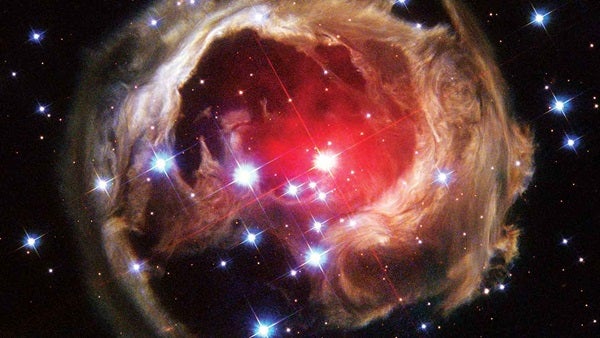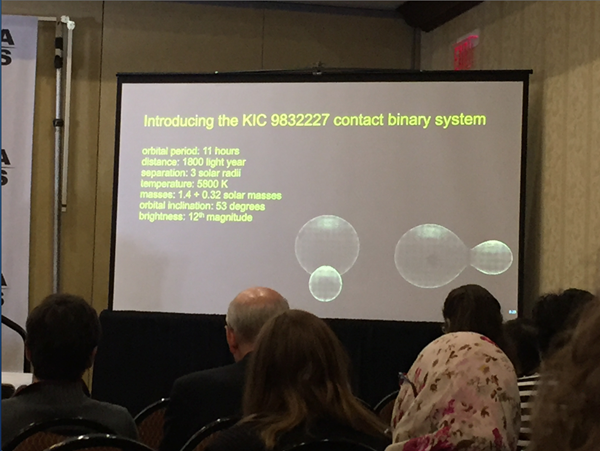In 2022, there will be a spectacular sky show. Two stars will merge into one, pushing out excess gas into an explosion known as a red nova. At magnitude 2, it will be as bright as Polaris in the sky, and just behind Sirius and Vega in brightness. The collision in the constellation of Cygnus will be visible for up to six months.
That’s pretty impressive. What’s more impressive: we’ve never been able to predict a nova before. But Lawrence Molnar, a professor of astronomy and physics at Calvin College, was able to find a pair of oddly behaving stars giving an indication of what might happen.
The objects, termed KIC 9832227, are currently contact binaries. Contact binary refers to two objects that are so close they are currently touching. The object was discovered by Kepler. The expected outcome is a merger between the two stars that will put on quite a show. Because both are low mass stars, the expected temperature is low, with Molnar terming it a “red nova.”
So how does Molnar know what will happen? After all, as he puts it, it’s “a very specific prediction that can be tested, and a big explosion.” He and his team have an example to look at: V1309 Scorpii. First observed in 2008, astronomers were able to watch the light curve as the event unfolded. First, there were a few “booms” in the sky. Then, a spectacular light show unfolded. Using precovery data, astronomers were able to trace back the evolution from 2001 on, giving a big picture of the decade of progression of the event.
How did they know it was a merging star?
“V1309 was (brightening) before the explosion,” Molnar said in a press conference at the 229th meeting of the American Astronomical Society. “It isn’t doing it today. That’s the smoking gun of a merging star.”
Using Kepler data, Molnar found that KIC 9832227 fit the lightcurve of V1309 almost perfectly. All radial velocity measurements seem to indicate a contact binary, and by aligning the light curve to the period in time, he and his team came to the conclusion that the merger would complete in 2022.
“We don’t know if it’s right or wrong, but it’s the first time we can make a prediction,” Molnar says. At 2nd magnitude, it’ll be easy if it see if the prediction was correct.
“You won’t need a telescope in 2022 to tell me if I was wrong or I was right,” he says.











